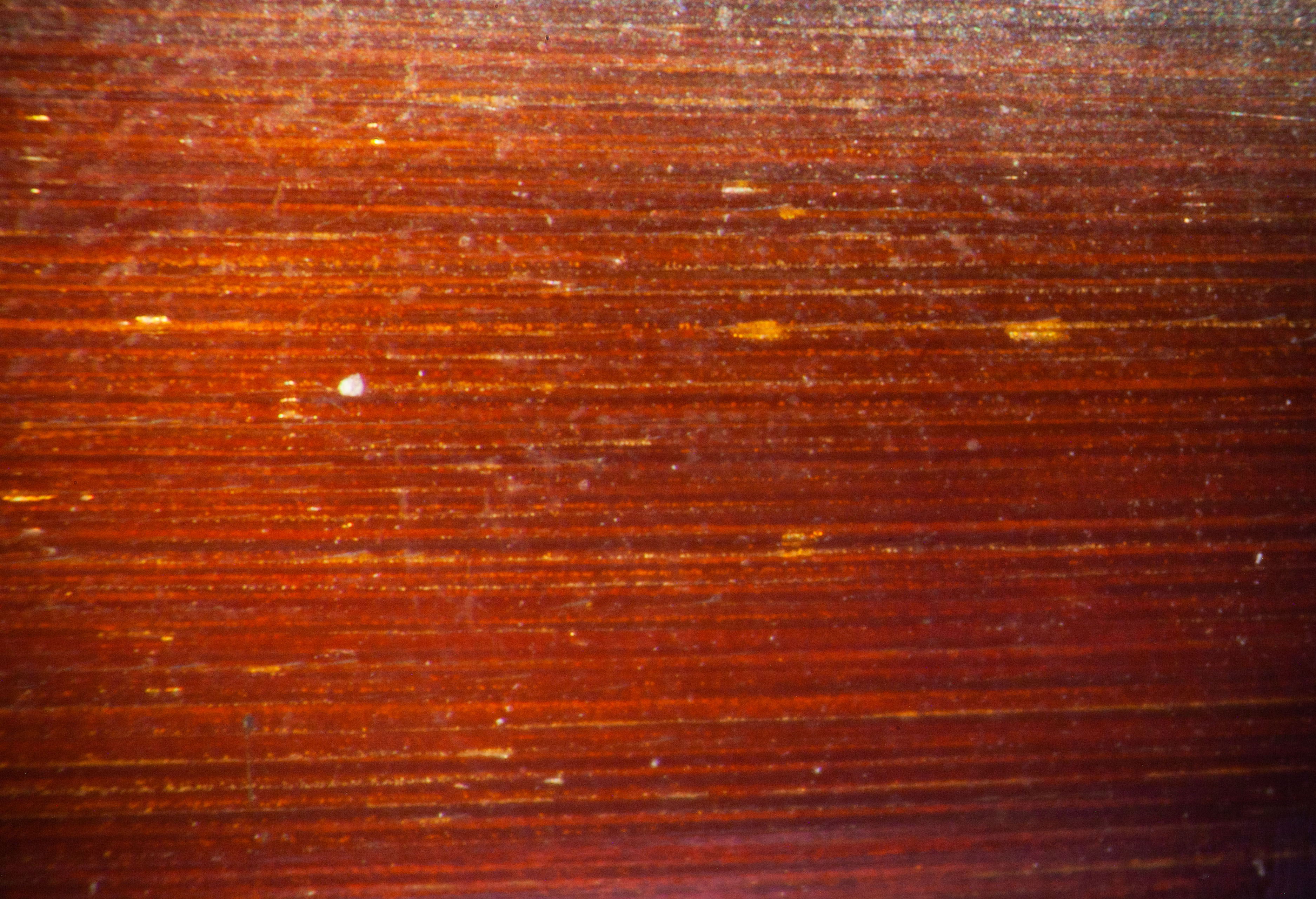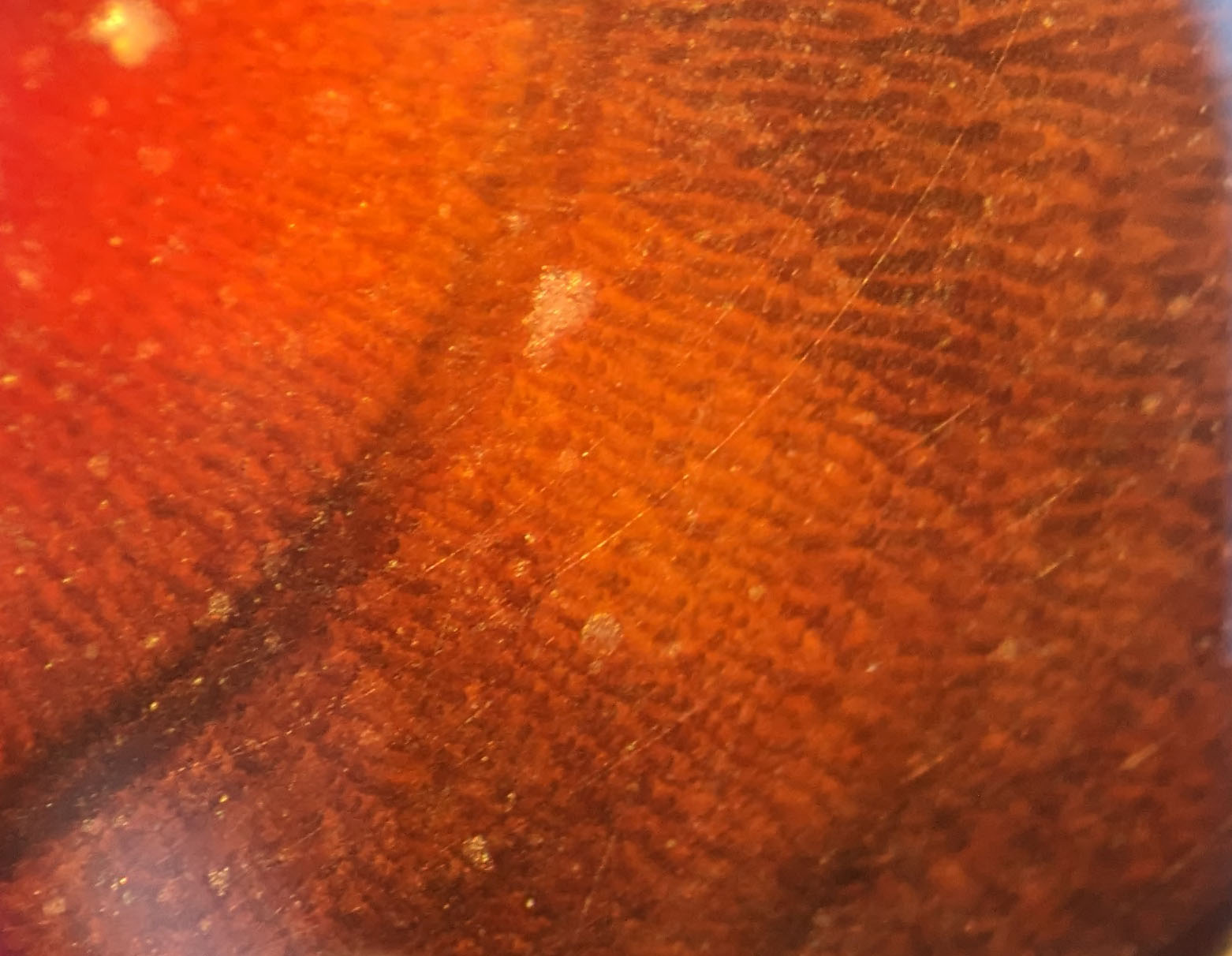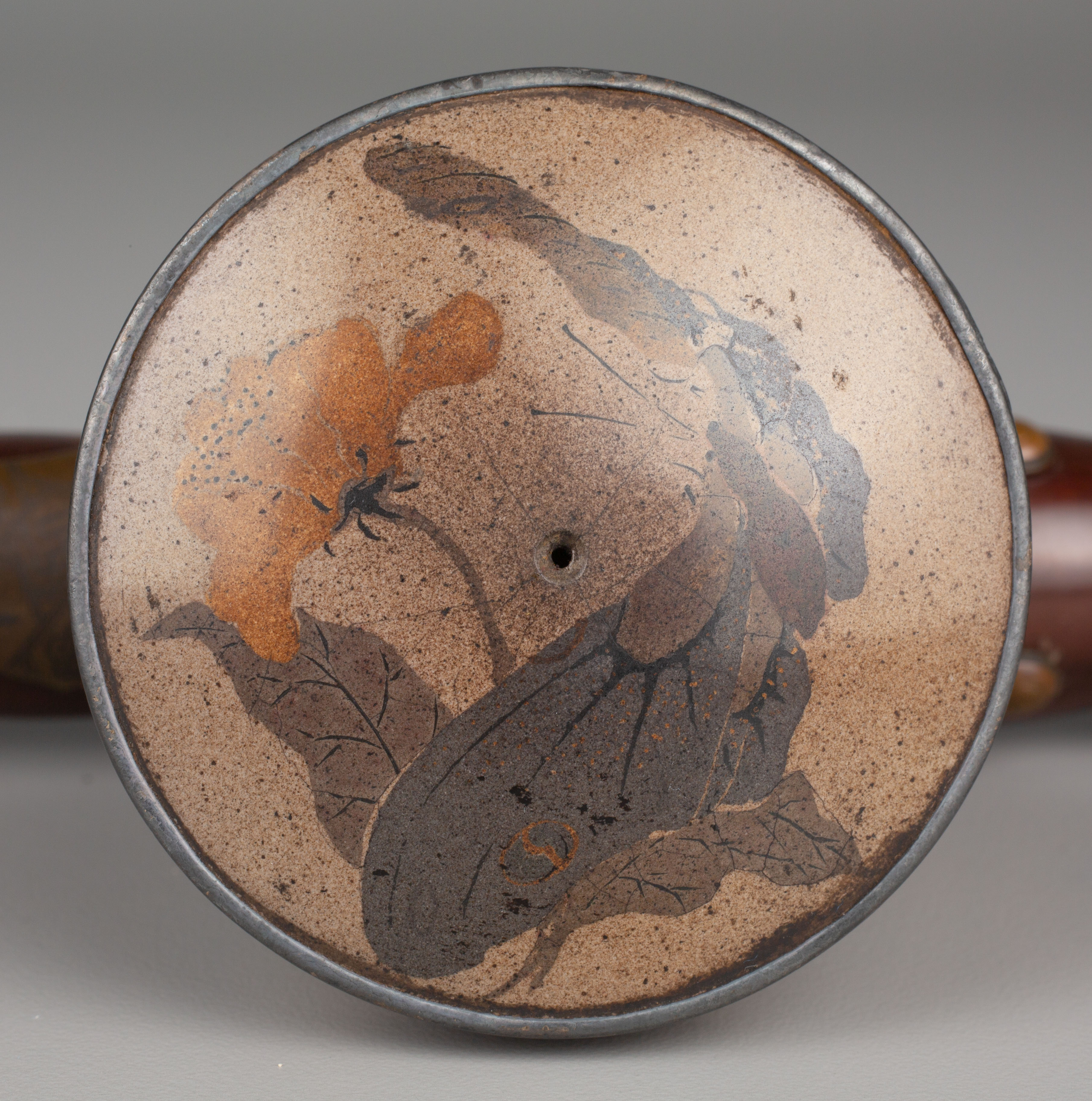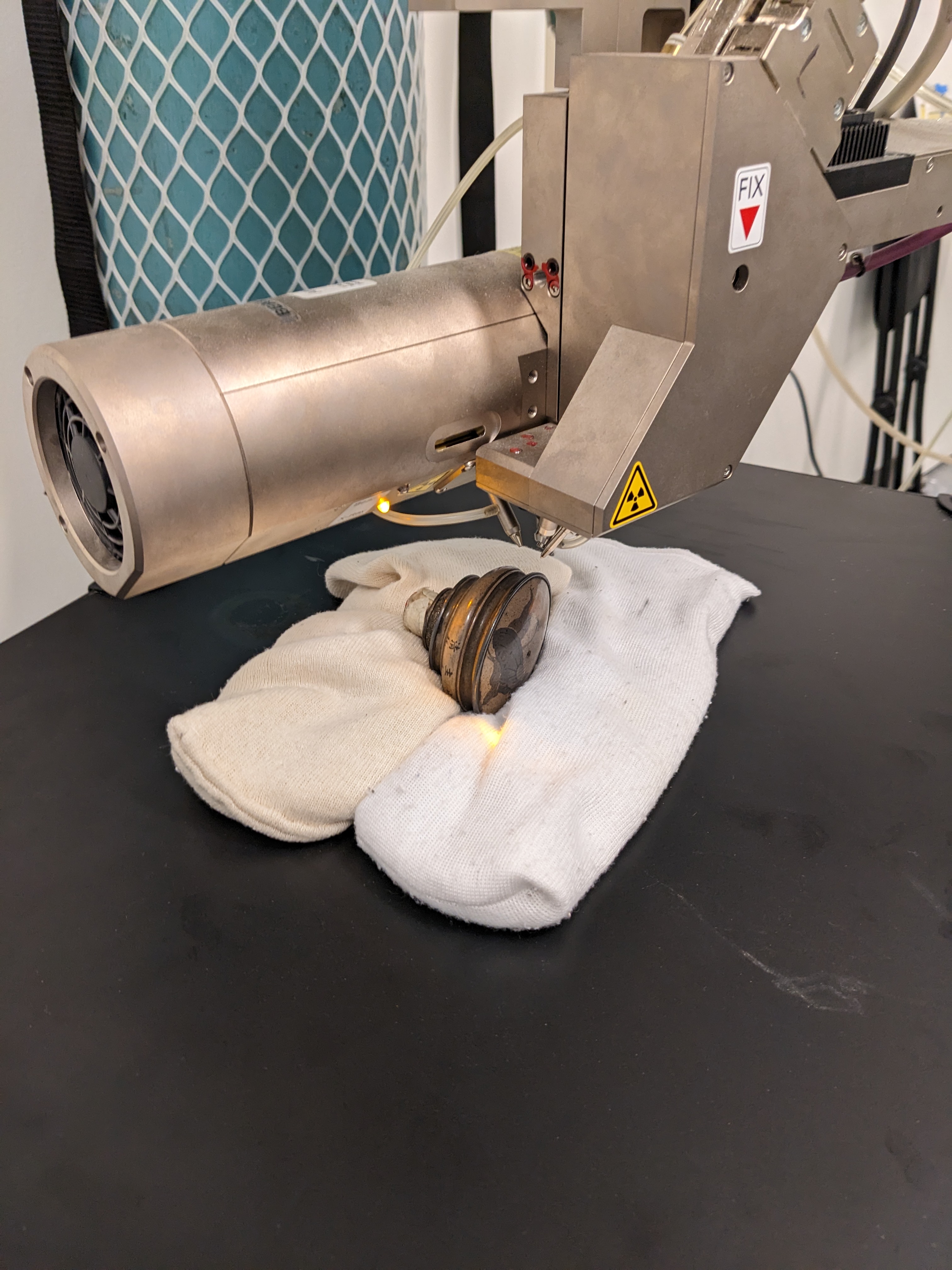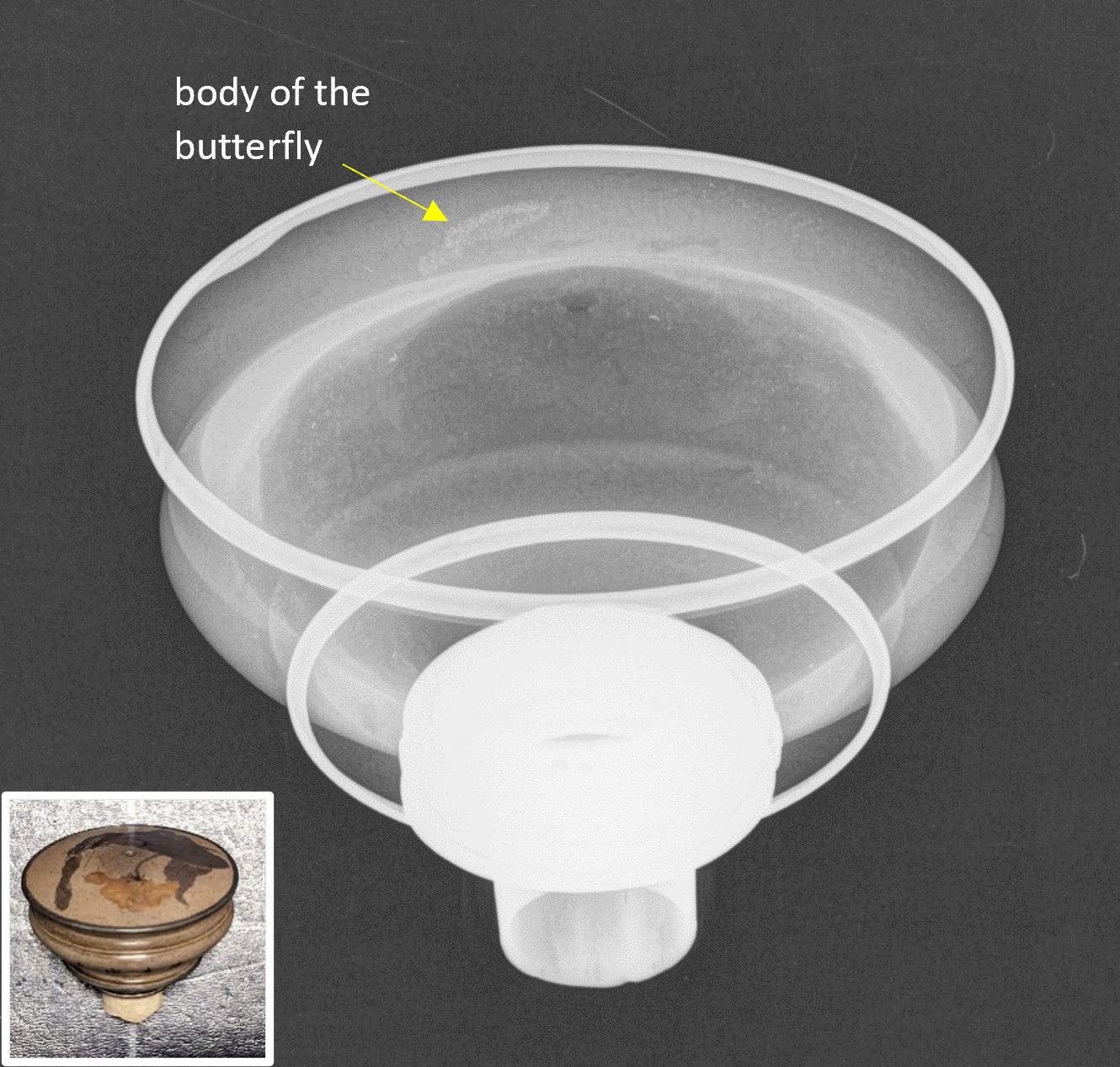Investigating the Materials of a Chinese Opium Pipe
The pipe enjoys pride of place in Objects of Addiction because it bridges two of the exhibition’s main concerns: the 19th-century opium trade and the Harvard Art Museums’ early collecting of Chinese art. The opium pipe entered the collections as part of a large bequest by Harvard alumnus Grenville Winthrop, an influential early collector of Chinese art in the United States. Very little is known about the pipe beyond the inscription along the pipe bowl, which reads (in translation) “to Owner of Hechao Cottage at the fourth month of the lunar year of Wuchen [1928 or 1868], for his amusement” and identifies the maker as “Mr. Chuncheng from Guangzhou.” The inscription suggests that the pipe was a gift or commission, likely for a person of high status, and this is reflected in its superior craftsmanship. For years, the object was catalogued as being made of wood, metal, and enamel, but when exhibition curator Sarah Laursen examined the object in person in preparation for its display, she questioned this classification. She suggested our conservation staff in the Straus Center take a closer look.
An essential and routine part of a conservator’s work is to identify the materials that make up an object. This is important for verifying the accuracy of information in our collections database, but it is also a necessary precursor to any conservation intervention, because the material properties will determine compatible cleaning techniques and repair materials. Furthermore, the material makeup of an artwork is key to deciding how best to store and exhibit it, since different materials vary in their light sensitivity and respond differently to changes in temperature and relative humidity. Materials can sometimes be identified with the aid of good lighting and a microscope to closely examine surface features. We also often use an ultraviolet lamp or advanced imaging techniques, which can enhance the visibility of materials that are indistinguishable in normal lighting conditions. When these modes of visual examination prove insufficient, we turn to our conservation scientists, who can employ a variety of analytical techniques to identify the chemical makeup of materials.
The Pipe Stem: Made of Horn?
The opium pipe made by Mr. Chuncheng is composed of a long stem, surmounted by a bowl on one end that is attached to the stem by a saddle. Given that wood is a common material for pipes of all kinds, it is understandable that the pipe stem material was classified in this way. However, the highly polished and translucent quality of the surface, as well as the weight and density of the material, led us to question if it was actually wood. In addition, the stem appeared to be formed from many short segments joined end-to-end, which seemed like an unnecessarily complex construction method for wood, which can be more easily carved as one continuous piece. The material that immediately came to mind as a possibility was horn, due to the surface appearance and the long tradition in China of using horn to make a variety of objects, from intricate sculptures to lanterns. While our initial observations pointed in this direction, I wanted to positively identify the material to allay any doubts.
The horns of many mammal species, including cattle, goats, and rhinoceros, are made of the protein keratin (which is the primary component of human hair). A characteristic feature of horn under magnification is the presence of long, parallel keratin fibers that are visually distinct from wood grain, as well as a unique structural pattern visible in cross-section.[1] These features were apparent and matched a horn reference sample and images. We were able to further refine the designation as water buffalo horn, based on the horn’s color, size, and geographical context.
The Pipe Bowl: A Mystery Material
At first glance, the designation of the pipe bowl as enamel seemed plausible. In an art historical context, the term “enamel” typically refers to a technique in which colored glass pastes are fired and fused onto a metal substrate. However, the pipe bowl lacked qualities associated with various Chinese enameling techniques, such as metal cloisons (wire partitions) and the bright colors of most painted enamels. The surface of the bowl is relatively smooth in appearance, with the black inscription and earthy, multicolored rendering of the poppy and butterfly completely level with the beige background. While the dark speckles throughout are reminiscent of what are sometimes found in ceramic (fired clay), the flush and well-integrated surface of the decorative elements is unusual and without obvious parallels. The metal connector at the base of the bowl and the rings along the outer edges obscure any potential structural joins. We also examined the interior with a borescope, but no additional features could be detected because of the thick buildup of charred smoking residues.
To investigate and characterize this mysterious material, I worked with conservation scientist Katherine Eremin to gather information about the elemental composition of the bowl using X-ray fluorescence (XRF) spectroscopy. XRF is a non-invasive technique, meaning that it does not require the removal of samples or alter the object in any way. The instrument targets an X-ray beam toward a precise point on the surface of the object, and the resulting emissions provide an elemental signature of the material. We took multiple readings from different areas of the bowl’s surface, including the five places in the inscription and pictorial scene that are marked by distinct colors. The results of the analysis showed the material to be mainly iron-based, which is consistent with both enamel and ceramic. The different colors of the design were all remarkably similar, with only subtle variations—an unexpected finding prompting further inquiry.
In addition to taking readings on the primary bowl material, we also used XRF to determine the compositions of the pipe’s metal components, which include the saddle that sits directly on the stem, the connector at the base of the bowl, and the rings around the edges of the bowl. This revealed the metals to be a mix of different brass types, and it also identified a silvering layer on the connector and rings.
X-Radiography
Given the limitations of our XRF data, I turned next to X-radiography. This technique, which we frequently encounter in dental and medical contexts, uses high-energy X-ray radiation to image the interior structure of an object. Since different materials vary in their transparency to X-rays, they can often be distinguished using this method. In particular, I wanted to see if a metal substrate is present on the interior of the bowl, as this would be indicative of enamel. With the assistance of Susan Costello, conservator of objects and sculpture, I captured X-ray images of the pipe at different energies and angles. At high energies, where we typically image metallic objects, only the metal rings around the edges of the bowl and metal connector at the base were readily visible. At lower energies, where we typically see features of ceramics, a much clearer picture of the bowl emerged.
Interestingly, only one element of the decoration is clearly visible in the X-ray images—the body of the butterfly. Returning to the XRF data, we noted that this reddish area had higher copper and zinc content than the other colors, which explains its appearance in the X-ray image. This fact helps confirm the lack of a metal substrate, as the dispersed copper colorant would be obscured by the much greater opacity of a copper sheet if it were present. Therefore, the bowl material is most likely ceramic.
Given this new information, the homogeneity of the bowl’s composition may be interpreted as evidence of a slip inlay technique, in which a thinned clay is mixed with colorants and applied into designs that are incised in the clay body. This technique was used to make the well-known Korean Koryŏ celadons, such as this one in our collections, but it has not often been found in Chinese ceramics.
How Was the Pipe Stem Made?
In addition to resolving the central question about the bowl’s composition, X-radiography also allowed us to better understand the segmented construction of the horn stem. The images show how the joints between the segments are precisely carved and fitted together to form tight seals. Since bovine horns are hollow and curved, only the solid tips could have been used to carve the thick, straight segments. Unexpected internal features of the pipe were also visible, such as a tube-like element that runs through the stem, complex cavities within the mouthpiece and end piece, and some amorphous material within. These findings make it clear that further research is needed.
New Questions
This study has given us a fuller understanding of the material aspects of the opium pipe, and it enhances our appreciation for the high level of skill and artistry required to produce it. As with most technical investigations, we answered many questions and developed just as many new ones. Exactly how was the delicate shape of the bowl formed in clay, and what are those parts inside the stem? Despite all the techniques at our disposal, time and practical constraints of our projects always leave some lines of inquiry for the future, when improved analytical techniques and new perspectives are bound to yield new knowledge.
I would like to thank my colleagues Sarah Laursen, the Alan J. Dworsky Curator of Chinese Art; Katherine Eremin, the Patricia Cornwell Senior Conservation Scientist; Susan Costello, conservator of objects and sculpture; Georgina Rayner, conservation scientist; Adrienne Gendron, objects conservation fellow; and Angela Chang, assistant director of the Straus Center and senior conservator of objects and sculpture, for their valuable contributions to this project.
Nicole Ledoux is associate conservator of objects and sculpture in the Straus Center for Conservation and Technical Studies at the Harvard Art Museums.
[1] Maggie Campbell Pedersen, Gem and Ornamental Materials of Organic Origin (Oxford: Elsevier Butterworth-Heinemann, 2004), 116–18.
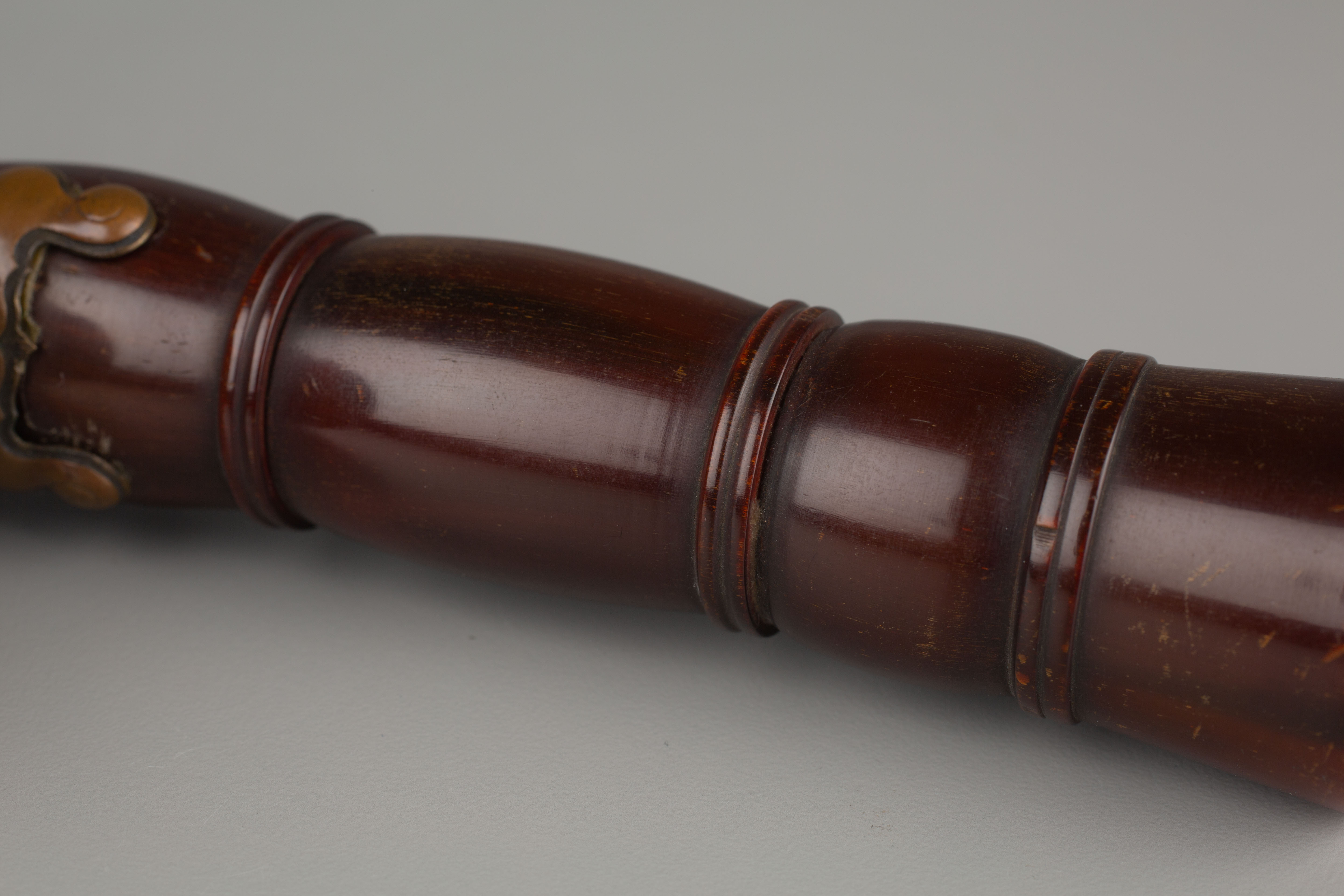
![Two images are side by side. At left is a semi-transparent, yellow-white lantern in the shape of an elongated globe, decorated with large Chinese characters in red on the front. The lantern sits on a brass base and has brass extensions at the top.]](https://s3.amazonaws.com/media.harvardartmuseums.org/production/uploaded_files/tour_builder/YFtpJHTmOUN7mLUq8fvwcGiZQTYD4v22lfg2Thj4.jpg?height=675)
